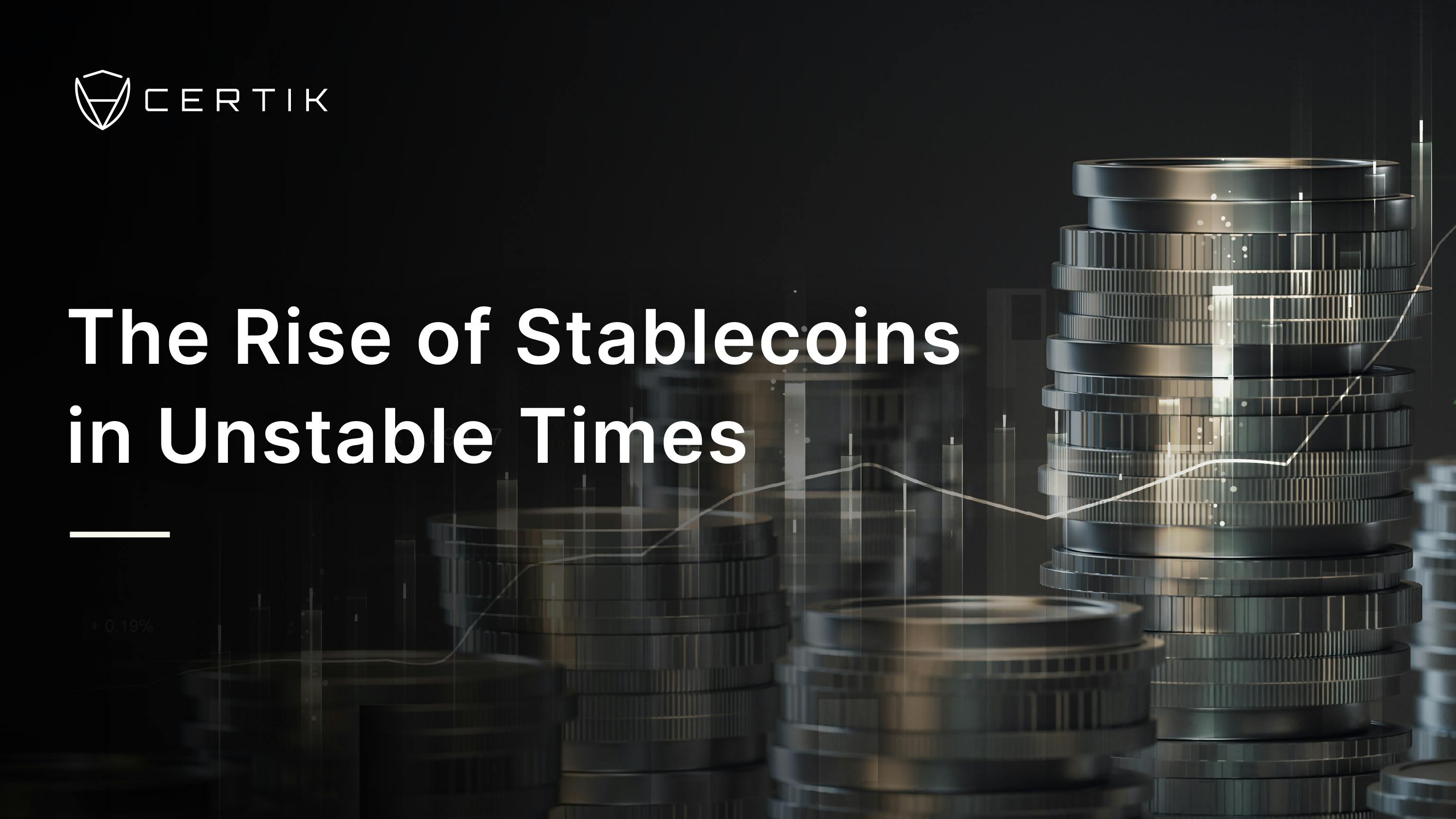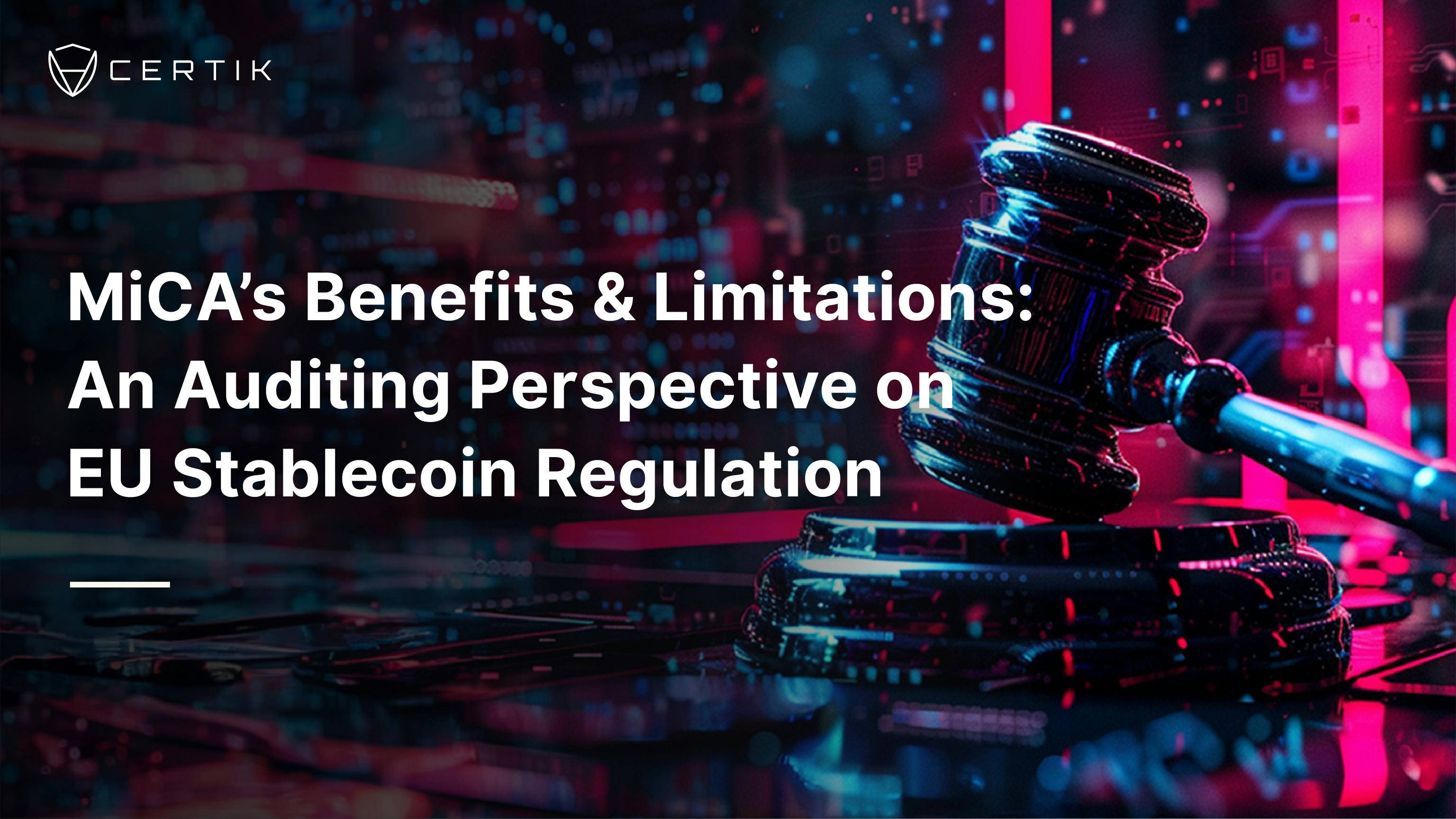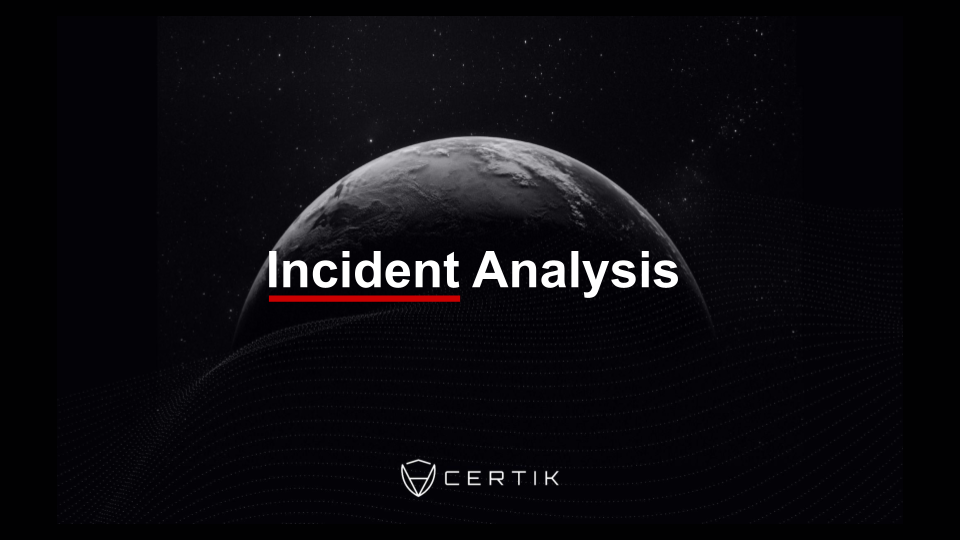The total value of circulating stablecoins currently stands north of $120 billion. They have steadily grown in market share over the last five years, now accounting for approximately 80% of cryptocurrency pair trading volume, up from 40% in 2018.
 Source: Reserve Bank of Australia
Source: Reserve Bank of Australia
In addition to mitigating the price volatility inherent in the cryptocurrency market, stablecoins serve what is to millions of people an even more important purpose: acting as a financial refuge during periods of economic and political instability. Whether in the face of war, political turmoil, economic decline, or repressive fiscal policies, stablecoins offer an increasingly-attractive hedge against financial volatility.

Staying Stable: How a Stablecoin Maintains Its Peg
First, a primer on the main types of stablecoin and how they maintain their pegs.
Fiat-collateralized stablecoins are backed by a reserve of fiat currency, like the U.S. dollar, held in a bank account. For each stablecoin issued, an equivalent amount of fiat currency is kept in reserve. This direct backing helps maintain a 1:1 peg to the fiat currency. The market generally values major fiat-backed stablecoins at this 1:1 ratio, but there can be slight deviations if demand significantly outweighs supply or vice versa., particularly common during periods of high volatility
Crypto-collateralized stablecoins are backed by other cryptocurrencies. To maintain stability, they often use over-collateralization, meaning the value of cryptocurrency held in reserve is greater than the number of stablecoins issued, to account for the volatility of the backing assets.
Algorithmic stablecoins use smart contracts to control the supply of the stablecoin, expanding or contracting it in response to changes in demand or market conditions. An increase in demand leads to more coin creation and a decrease in demand triggers coin burning to maintain stability.
Utilization Amid Economic Turmoil
Stablecoins are increasingly favored in countries grappling with high inflation and lack of access to financial infrastructure, notably in Latin America and Africa.
According to Ernst & Young, Argentina, Iran, Lebanon, South Sudan, Sudan, Suriname, Turkey, Venezuela, Yemen, and Zimbabwe were all experiencing hyperinflation in 2022, while Angola, Ethiopia, Haiti, and Syria were approaching hyperinflationary environments.
The inherent volatility of cryptocurrencies like Ethereum and Bitcoin has led many individuals in these regions to opt for stablecoins, which present a lower financial risk compared to unpegged cryptocurrencies as well as local fiat currencies.
In Argentina, where inflation soared to 100%, stablecoins have become a go-to financial instrument to counter the peso's rapid devaluation. The transition has been facilitated by crypto companies such as Lemon and Binance, which introduced crypto cards enabling transactions in digital assets. Similarly, in Turkey, stablecoins are gaining traction as an inflation hedge, with 52% of the population aged 18 to 60 investing in cryptocurrencies over the past 18 months. Among these investors, Bitcoin leads with 71%, followed by Ethereum at 45%, and stablecoins at 33%.
In Lebanon, stablecoins have emerged as a financial lifeline amid a protracted economic crisis. The Lebanese economy plummeted in 2019, followed by the closure of financial institutions in 2020, prompting government restrictions on citizens' access to their funds. The local currency lost over 95% of its value compared to its standing in August 2019, devastating the monthly earnings of minimum-wage workers from an average of $450 to a mere $17. Blue Wallet reported a 1,781% surge in digital wallet downloads in Lebanon during 2020, outpacing all other countries.
Adding insult to injury, the Beirut port explosion, which coincided with the COVID-19 pandemic, further fueled Lebanon's hyperinflation. The Lebanese pound, once pegged at 1,500 to the U.S. dollar, hyperinflated to 40,000. U.S. dollars deposited in Lebanese banks before 2019 lost 85% of their original value, accelerating the adoption of largely-USD stablecoins, which maintain a 1:1 peg with the U.S. dollar. The World Bank categorizes Lebanon's financial crisis as one of the most severe globally since 1850, and the United Nations estimates that it has pushed 74% of the Lebanese population below the poverty line.
 Source: Bloomberg
Source: Bloomberg
Beyond the use of stablecoins, crypto mining has gained traction among Lebanese residents, particularly in the Chouf Mountains, where access to hydropower has enabled its growth. A report by CoinGecko in August 2023 highlighted that Lebanon offers the world's most cost-effective crypto mining, requiring only $266.02 in electricity to mine a single Bitcoin. This is 783 times cheaper than in Italy, the most unprofitable country for mining, which in contrast costs $208,560.33 USD to mine 1 BTC.
 Source: Rest of World
Source: Rest of World
Locals residing within Africa’s most volatile markets have also turned to stablecoins as a cornerstone for those trying to migrate to countries with more economic opportunity. Migrating out of Africa has become increasingly difficult for many, as immigration documentation often must be paid in US dollars. Meanwhile, central banks such as Nigeria’s limit the amount of US dollars citizens can spend monthly on their debit cards, inadvertently nudging the populace towards adopting stablecoins. These restrictions were imposed in an effort to protect the local currency after oil prices dropped dramatically during COVID-19. As a means of skirting around these restrictions, many Nigerians intending to migrate have started using stablecoins to pay for their immigration documents.
Utilization Amid Political Turmoil
The Taliban's takeover of Afghanistan in August 2021 posed an imminent threat to personal assets of many in the country, prompting a shift among some Afghans from traditional forms of wealth like cash and jewelry to stablecoins as a means of asset protection. After a 1,000% increase in cryptocurrency purchases, Afghanistan was ranked #20 out of 154 countries on the Crypto Adoption Index in 2021, its first appearance on the chart.
Afghanistan's fleeting engagement with cryptocurrencies and stablecoins ceased abruptly in August 2022 with the Taliban's prohibition of all digital assets. The ban was justified on religious grounds, labeling cryptocurrencies as speculative and akin to gambling. Non-compliance led to arrests, effectively cutting off Afghan citizens from their digital holdings and crippling the nascent crypto market. The United Nations reported that an additional 25% of Afghans had fallen into poverty.
The Wagner rebellion in Ukraine serves as another case where stablecoins gained prominence during political unrest. Initiated by allegations from the now-deceased Yevgeny Prigozhin that the Russian military had attacked Wagner personnel, the rebellion escalated when the group advanced towards Moscow. This movement led to a 277% surge in trading of Tether against the Russian ruble.
 Source: TradingView
Source: TradingView
Within a mere 24 hours, the trading volume of USDT/RUB skyrocketed from $3.9 million to $14.8 million. When Prigozhin ordered his forces to stand down, the trading volume of USDT/RUB returned back to $3 million that very same day. Similar trading behavior was seen at the beginning of the war in Ukraine, when Russian and Ukrainian traders alike turned to Tether and Bitcoin to safeguard their assets.
The Other Side of the Coin
Stablecoins, operating in a semi-regulated environment, are relatively more vulnerable to unforeseen regulatory changes than major cryptocurrencies like Bitcoin or Ether. Sudden policy shifts or legal interventions can dramatically affect their stability and usability. This uncertainty poses a significant risk to users who rely on stablecoins for financial transactions and investments.
Moreover, despite being touted as a decentralized solution, stablecoins often depend on traditional financial systems for maintaining their peg to fiat currencies. This reliance creates a paradox, as their stability is anchored to the very systems they aim to replace. For instance, many stablecoins are pegged to the U.S. dollar and backed by assets like U.S. treasuries or fiat currency in banks. In addition, the operational transparency of some major stablecoin issuers remains ambiguous, raising concerns about the integrity of their financial backing. Yet for many people experiencing the crippling effects of hyperinflation, these concerns take a backseat to their immediate and needs.
Circumventing Sanctions
Stablecoins, while primarily used for legitimate purposes, have also facilitated illicit activities like sanctions evasion. Although it's debated whether Russia used stablecoins to dodge sanctions for invading Ukraine, evidence shows that cryptocurrencies have been used to sidestep U.S. sanctions against Iran and North Korea, both penalized for their nuclear programs.
Iran
Iran has strategically utilized cryptocurrency for governmental transactions, particularly for importing goods, as a countermeasure against the loss of revenue from oil export sanctions. The country has harnessed its oil surplus to power Bitcoin mining operations. This approach enables Iran to sell its energy reserves on a global scale while simultaneously mining Bitcoin for import transactions, thereby sidestepping conventional financial systems. The Iranian Presidential Center for Strategic Studies underscores the critical role of cryptocurrency in generating revenue for the regime.
Russia
In January 2023, amidst economic strains from U.S. sanctions, Russia and Iran contemplated initiating a gold-backed cryptocurrency to facilitate bilateral trade. The gold-backed coin was intended to be developed as a stablecoin, which would be used to “enable cross-border transactions instead of fiat currencies like the United States dollar, the Russian ruble or the Iranian rial.” However, the realization dawned that this stablecoin's effectiveness in bypassing sanctions would be limited without widespread global acceptance.
North Korea
In April 2023, a North Korean Foreign Trade Bank representative faced charges from the U.S. Department of Justice for collaborating with cryptocurrency traders to illicitly use funds for North Korean purchases. This involved working with North Korean IT personnel in the U.S., who, under assumed identities, secured employment and opted for payment in stablecoins like Tether and USDC. These funds were then repatriated to North Korea, utilizing a sophisticated laundering scheme to bypass U.S. sanctions. The process included exploiting stolen personal data to open cryptocurrency wallets, transferring assets to European wallets, employing mixers to obscure transaction trails, and ultimately converting the laundered cryptocurrency into fiat currency.
Conclusion
Stablecoins, pivotal in risk management within Web3, provide a safeguard against the volatility characteristic of the digital asset market. Their significance extends beyond just economic and political scenarios; they are crucial in cushioning the fallout from local fiat currency collapses. As the digital landscape evolves, the relevance of stablecoins in risk mitigation is poised to grow.
Stablecoins offer a reliable currency peg, aiding investors in navigating the complexities of diverse political and economic environments. They are instrumental in facilitating migration to more stable regions, both as a method of payment and as a stable currency in which to save.
Yet, stablecoins face challenges and scrutiny. Their involvement in activities like sanctions evasion and the attention they draw from regulators underscore their complexities. The stability they provide often hinges on the very traditional financial systems and regulations they seek to circumvent. As the digital asset landscape evolves, the contradictions of stablecoins will continue to be a central theme among investors, regulators, and policymakers.



